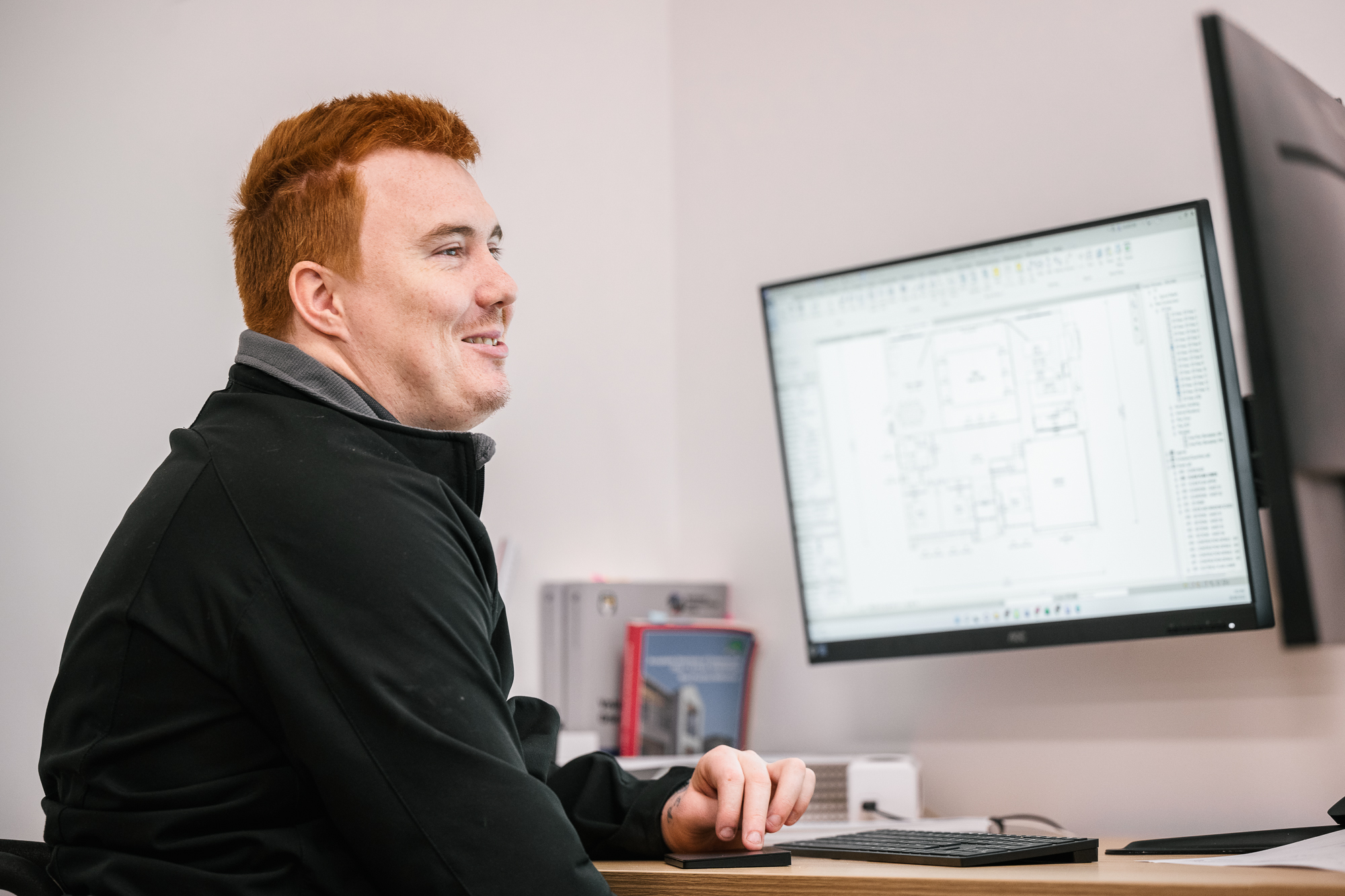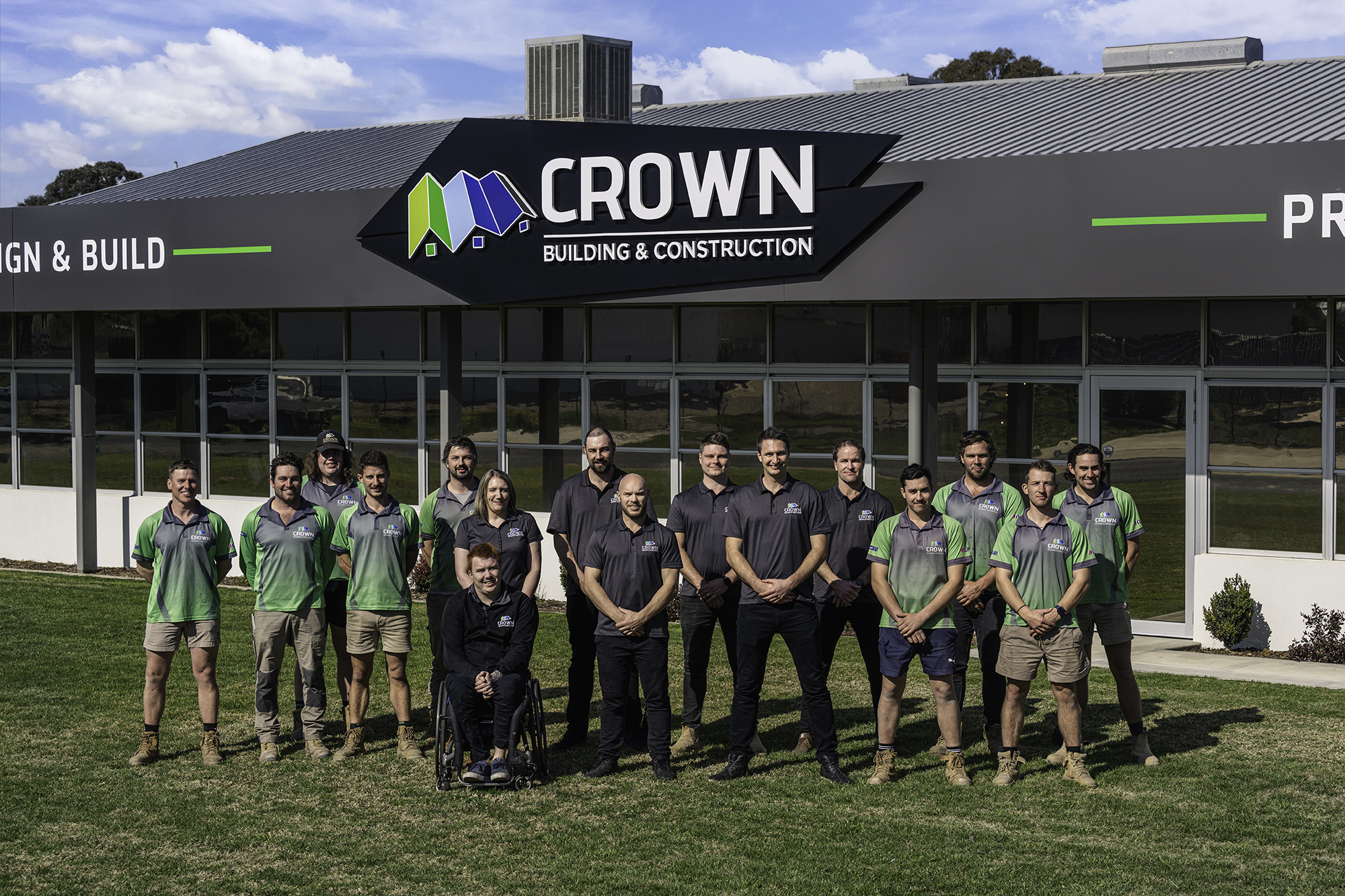Emerging Talent: Nathan Lukey
It is always a thrill for us when one of our students completes a qualification, but when that student has had to overcome significant obstacles, it makes the success so much more satisfying. An example of this triumph is Nathan Lukey.
When Nathan suffered an accident that left him a quadriplegic, he had to re-evaluate his working life, and what he would do next.
We caught up with Nathan after he finished his Certificate IV in Residential Drafting, and would like to share Nathan’s inspirational story in this interview.

Here is his full interview:
Hi Nathan just want to congratulate you on your graduation in the Cert IV in Residential Drafting. Thanks for giving up some time today for this conversation.
What is your work history and industry experience prior to undertaking the course?
I did my apprenticeship and gained the Cert III Carpentry, and over the four years of my apprenticeship I worked with four different builders. I finished that in 2012, and then I had my accident in 2017.
After my accident I went out and sought something else that was going to help me be able to stay in the same industry, and I decided drafting would be a good next step. I thought I could put all my construction-based knowledge into the drafting side of things, as I was basically drawing how things went together in construction.
The internet was great for me, as I was able to study from home.
What is the extent of your physical limitations?
I’m deemed a quadriplegic, which is basically all four limbs affected. So, full paralysis from the chest down, although because I still have some feeling I’m deemed incomplete. Also, I have minimal hand function, my arms are pretty good and I’m in a wheel chair.
It was definitely a big life adjustment, but thank God for technology.
What initially attracted you to study with BFDA?
You guys were literally the only ones that offered it online from all the searches that I did. That was basically it, everyone else that I spoke to, they all told me that they don’t do it online.
At the time I was still figuring out all the ins and outs of my body and what had changed, and this course suited my life style.
It’s definitely the day and age where people want to do online training, they have kids, family and other responsibilities. I think online training is definitely the best way to study.
How has studying this drafting qualification helped you change your career?
I’d say it’s given me a whole new outlook on life, I guess. When I had my accident, I actually didn’t think I’d be able to work, because I didn’t know what I could do.
I was not really big on computers and stuff; I think being able to put my knowledge into something else. I first worked with John Carter, who used to draw Dad’s plans when we were building. He offered me some work, taught me a bit about the program and the ins and outs, and I’d site visits with him; all the basics which helped me with my course.
I’ve since worked for another company who did transportable cabins. I worked three days a week, and travelled an hour each way, every day.
I am currently undertaking my Advanced Diploma in Building Design, and my Cert IV in Energy Ratings.
So, the end goal is to become an independently registered building designer and end up doing more high end individual residential dwellings. I really like drawing good details, so that everyone knows what they’re doing, and what needs to be done to achieve a high-end finish.
Is there anything that you found particularly challenging about studying online?
I started with ArchiCAD on a Mac, which was a bit hard at the time. My hand function isn’t great, so that was a bit of a barrier that I had to move past and figure out. The laptop for me was the easiest thing, having the keys and the mouse, and rather than having an actual mouse where I have to click buttons, I could use the mouse pad.
ArchiCAD just wasn’t for me so I started using Revit. That’s what John used, and he was a good source of information. He was hands on, only lived 5 mins away, and was able to come around and help me.
Even now, if there’s something I’m unsure about I still jump on YouTube. I also do this if I’m looking for something I think I can do a lot quicker, and see if someone else has done it. I just watch videos and teach myself, I guess.
It’s all personal preference, but I think there is also a period of adjustment to self-paced learning. When you’re seven or eight years out of high school and going back to a computer, you have to force yourself to sit down and go through the motions, until you become used to studying again.
The course is really well structured, in the sense that you start at A and finish up at Z, so to speak, and you work through everything in between, which is good. You guys don’t let us go all the way ahead, you have to do something and make sure it’s correct, then you go on to the next step and the next step. Drill it into the system I guess, it’s repetition and hours.
Now I sit here on the computer, drawing away at stuff and I can self-manage everything. With my current job I go out on site and use my 3D point cloud scanner because I can’t measure with a measuring tape. I’ll go in, do my scans, and then talk to the clients about what they want.
I’ve made my own Revit templates, for a bathroom reno, kitchen reno and a new internal renovation. So, I just open the right template, give it a job name and I’m ready to start. I’ve got checklists, and the template has all my notes, so I can go around and gather all the information I need for clients.
Then I come back and do a concept drawing and go through the motions. I put a revision in my title block with dates and what it was and stuff like that to keep track of it.

How did you keep yourself organized and manage your time throughout the course?
I knew from speaking with John, and from my personal experience, that the software was going to be the hardest for me to learn, to become fluent and consistent with, and to do the drawings and modelling. For instance, when you look at a section it was there, working in the model, not just looking right because I’ve filled regions and things like that.
I did my study as much as I could, and then John offered me a job, and I sort of got distracted to be honest. I got excited about going back to work, but then I think that returning to work, the repetition and consistency of my days encouraged me back to my studies. And now that I was working again, I could take practical things that I’d learnt about the program and process, and apply that to my studies.
Thanks so much Nathan for sharing your story. It is such an inspiration for us at BFDA. Knowing that we can make such a huge impact on peoples lives really makes us realise that our decision, many years ago, to offer fully online courses was the right decision for us.
So great to hear Nathan’s story. His unique perspective on building design and his study of energy efficiency in buildings show that he is aligning himself to do some really amazing work. Looking forward to hearing about the next chapter in his life.
- Photos: Provided by Nathan Lukey


